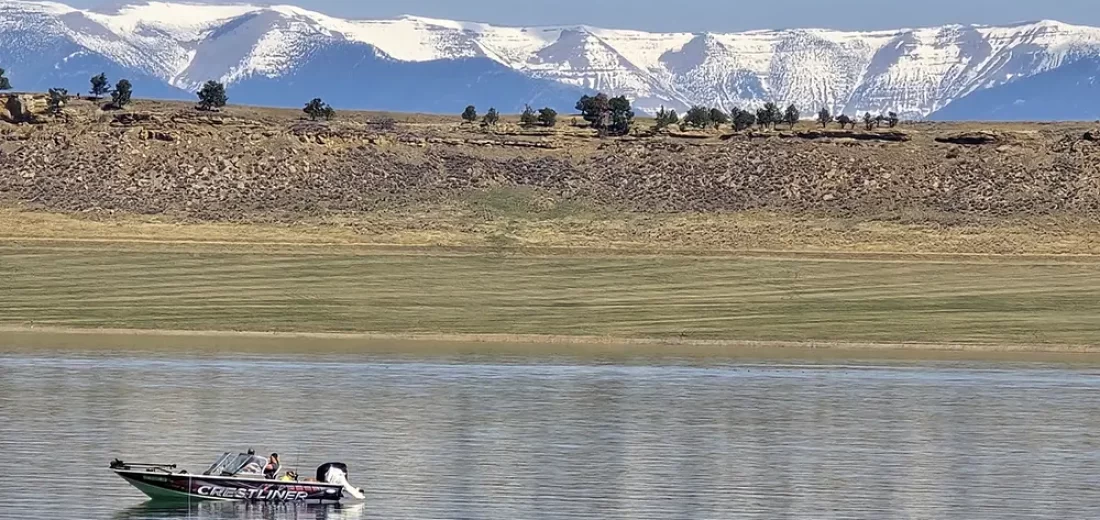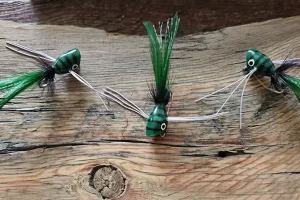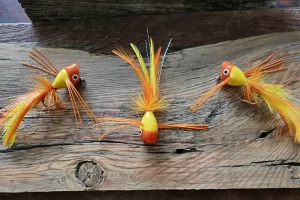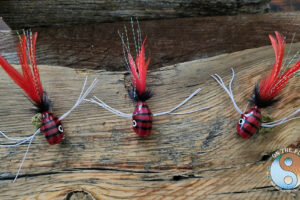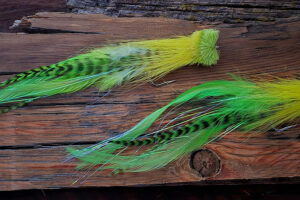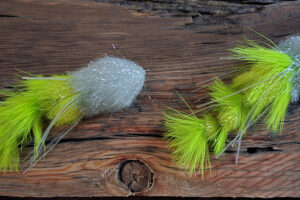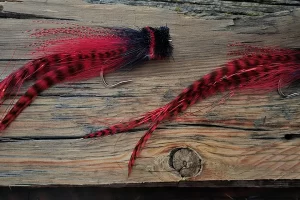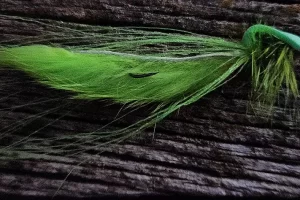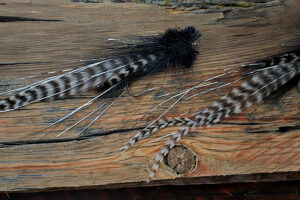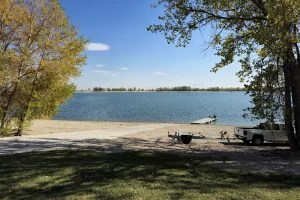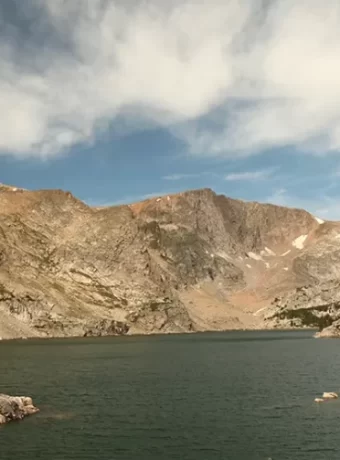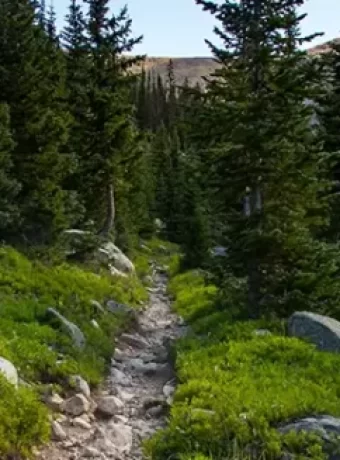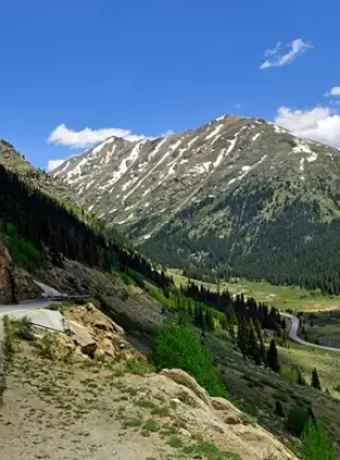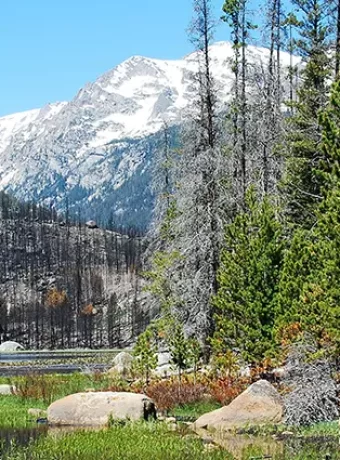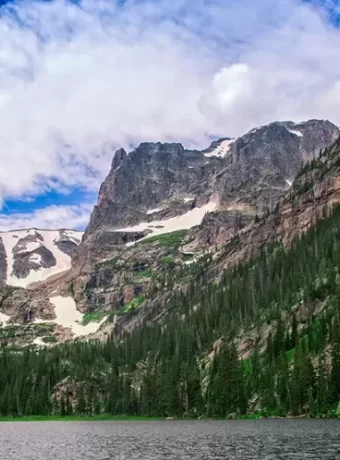Table of Contents
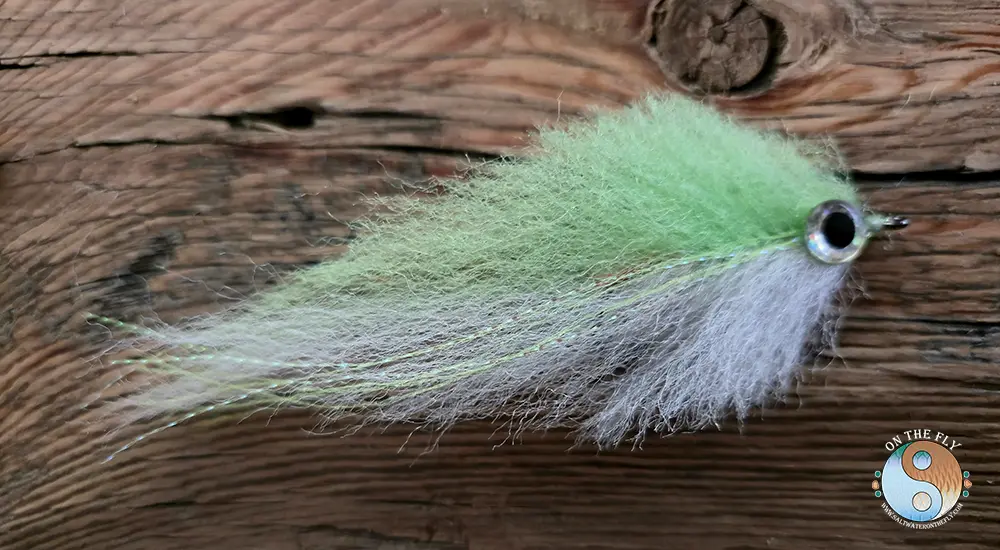
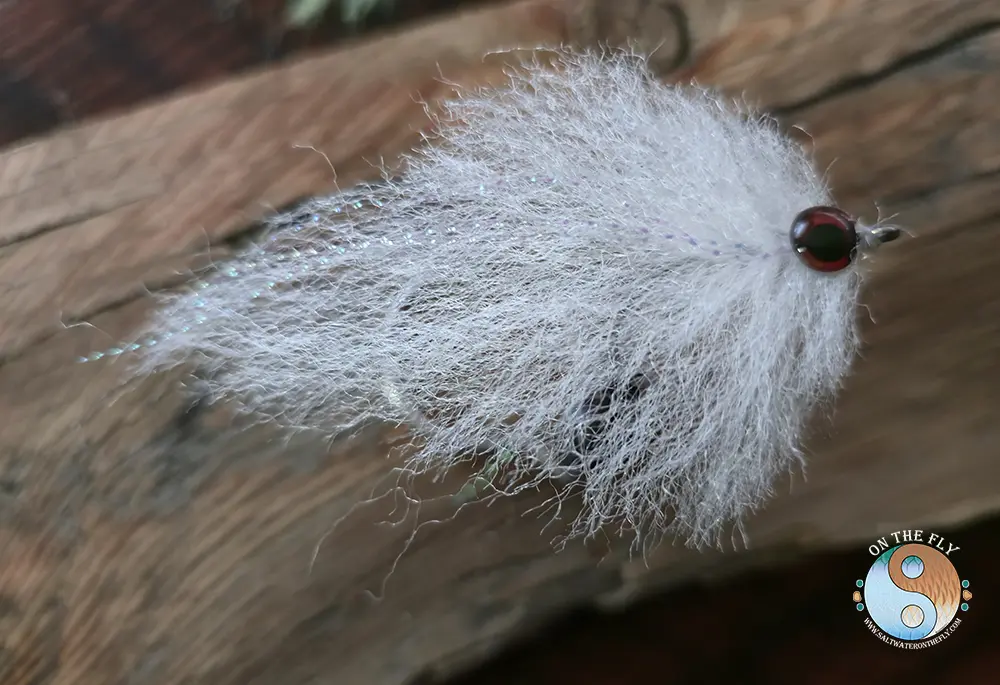
Montana Muskie Fly Fishing Ackley Lake & Deadman Basin for Monster Muskie
I want to tell you about a little-known fly fishing adventure that’ll blow your mind. Ackley Lake and Deadman Basin in Montana are hiding some of the biggest, baddest muskie you’ve ever seen – and they’re just waiting for you to cast a line.
Muskie on a fly rod? In Montana? May sound crazy, right? But trust me, once you hook into one of these beasts, you’ll be hooked for life. Muskie Fly fishing isn’t your grandpa’s trout streams, folks.
Fly Fishing for Tiger Muskie at Ackley Lake and Deadman’s Basin Reservoir in Montana
If you’re looking for an exciting fly fishing adventure, head to central Montana and cast a line for tiger muskie at Ackley Lake or Deadman’s Basin Reservoir. These scenic lakes offer decent fishing opportunities for these unique predators.
Overview of Ackley Lake and Deadman’s Basin Reservoir
Ackley Lake and Deadman’s Basin are two hidden gems for tiger muskie fishing. Surrounded by the rugged beauty of the Belt and Crazy Mountains, these reservoirs provide a stunning backdrop for your fishing trip. Both lakes have good populations of tiger muskies, thanks to stocking efforts by Montana Fish, Wildlife & Parks. At around 160 acres, Ackley is the smaller of the two, while Deadman’s Basin covers nearly 2,000 acres when full.
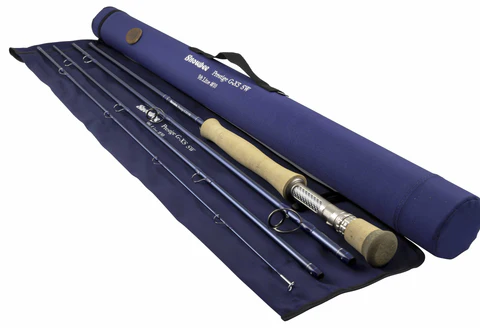
Muskie Fly Fishing and even pike on a fly rod. I use a 9′ 10-weight saltwater fly rod and a saltwater fly reel. You need a good drag and lots of backbone in the fly rod.

Best time to fly fish for tiger muskie
I’ve found the best time to target tiger muskie at these lakes is from late spring through early fall. June and September are peak months, when water temps are in the ideal 50-70°F range. Muskie activity increases as temperatures rise, so focus your efforts early and late in the day during summer. Keep an eye on weather patterns too – fishing can be tough right after a cold front moves through.
Recommended gear and tackle
To handle these powerful fish, you’ll want an 8-10 weight rod with a stout backbone. Pair it with a large arbor reel that has a strong, smooth drag system. I use heavy leaders with a wire bite tippet to prevent those razor-sharp teeth from slicing through my line. Throwing big flies on this setup can be tiring, so don’t forget to pack a few cold drinks for breaks between casts.
In the plains and rocky mountain state Muskie Fly Fishing is a mid-spring to late fall sport. And the sun can be quite intense. I like sun protective graphic hoodie and leggings under shorts. Outdoor apparel with a UPF-50 sun protection and sewn in face mask.
Top Flies for Catching Tiger Muskie
Choosing the right fly is key when targeting tiger muskies. These aggressive predators aren’t picky, but you need to “match the hatch” and grab their attention with your offering. Here are some of my go-to patterns:
Streamers
Large baitfish-imitating streamers are my top choice for tiger muskies. I like articulated patterns such as Dungeons, Peanut Bunkers, and Hawkins Triple D’s tied on 3/0 to 5/0 hooks. Black, olive, and white/chartreuse are all proven colors. Cast these monstrous flies on a sinking line and retrieve them with short, erratic strips to trigger strikes from cruising fish. Hold on tight when a muskie slams your streamer.
At Deadman Basin I have caught several smaller Muskie’s on Black conehead Woolly Buggers in black, purple, and olive in size 4 & 6 tied on 4XL streamer hooks.
Poppers
When muskies are in the mood to crush topwater flies, it’s an adrenaline rush like no other. I always have a few mega-sized poppers in my box for those special days. Throw these at dawn and dusk or on overcast afternoons. Work them with a steady “chug-chug-pause” retrieve, and watch for explosive strikes. Be ready with a follow-up cast if a fish misses on the first pass.
Leech patterns
While streamers and poppers get most of the attention, don’t overlook leech patterns for tiger muskies, especially in spring or when fishing deeper water. A black, purple, or olive conehead bunny leech in size 2/0-4/0 can be deadly. I like to fish these on a sinking line or sink-tip, stripped slowly along the bottom near weed edges and drop-offs. Experiment with your retrieve cadence until you crack the code.

Out Muskie Fly fishing I use a single sided streamer fly box and a double side streamer fly box. Muskie, Pike and Bass streamer flies.
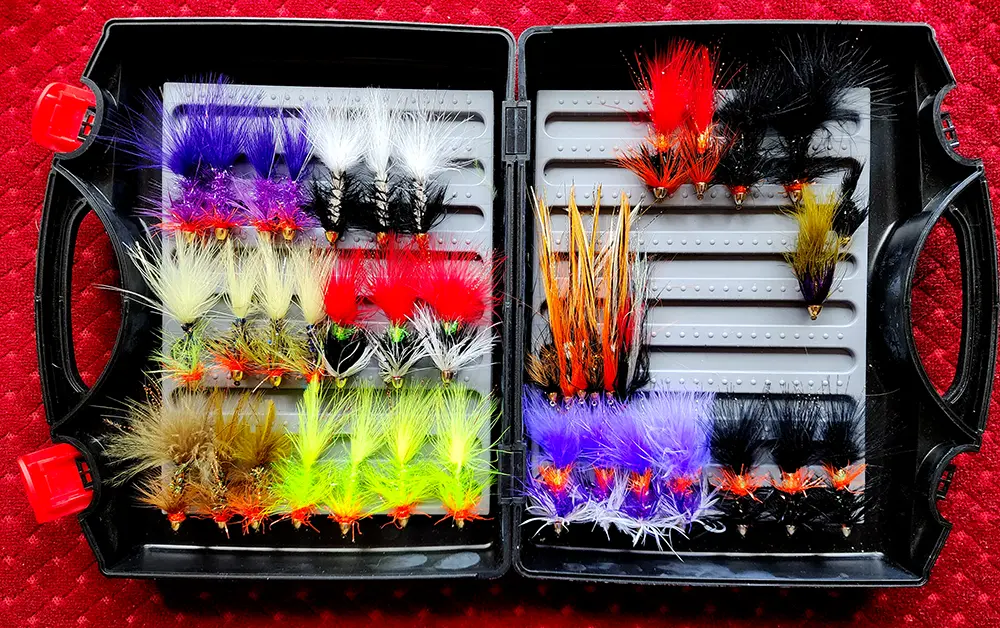
Fly fishing for Musky with Poppers on Ackley Lake and Deadman Basin
Fly fishing for musky with poppers on Ackley Lake and Deadman Basin in Montana offers an exciting opportunity to target tiger musky, a powerful hybrid of musky and northern pike known for their size and aggression. These central Montana reservoirs provide unique fisheries for anglers seeking a topwater challenge. Below is a detailed guide to help you succeed in this pursuit.
Best Times to Fish
- Season: Late spring through early fall is prime time, with June and September standing out as peak months. Water temperatures between 50-70°F are ideal for musky activity.
- Time of Day: Focus your efforts during low-light periods—early morning and late evening—when musky are most active.
- Weather Considerations: Avoid fishing immediately after a cold front, as musky tend to become less active during these times.
Gear Recommendations
- Rod: An 8-10 weight fly rod is recommended to handle the strength and size of musky.
- Line: Use a floating line, essential for keeping poppers on the surface.
- Leader: Equip a heavy leader (20-30 lb test) to withstand musky’s sharp teeth and powerful runs.
- Poppers: Choose large poppers, typically 4-6 inches or longer, in bright colors like chartreuse, orange, or yellow. Patterns that mimic local baitfish or generate significant water disturbance are most effective.
Popper Selection and Retrieve Techniques
- Popper Types: Opt for large, noisy poppers designed to attract predatory musky. Effective patterns include the Dahlberg Diver, Crease Fly, or similar topwater flies that create commotion.
- Retrieve: Employ short, sharp strips to produce a popping sound, followed by pauses to give musky a chance to strike. Experiment with retrieves—such as an erratic strip-strip-pause cadence or a faster ripping motion—to find what works on a given day.
- Handling Follows: Musky often follow flies before committing. At boat-side, use a figure-8 maneuver to convert a curious follower into a catch.
Targeting Musky in Ackley Lake and Deadman Basin
- Ackley Lake (160 acres): This smaller reservoir features weed beds, submerged structures, and drop-offs—prime ambush spots for musky. Target these areas for the best results.
- Deadman Basin (1,954 acres): A larger body of water, Deadman Basin offers diverse habitats. Focus on weed edges, points, and drop-offs where musky patrol for prey. Covering water is key here, making a boat advantageous.
- Access: Both lakes have boat ramps—Ackley’s on the northwest shore and Deadman Basin’s on the southwest. While shore fishing is an option, a boat greatly enhances your ability to reach productive zones.
Regulations and Conservation
- Regulations: Check the latest Montana Fishing Regulations for rules specific to tiger musky, including any size or catch limits.
- Catch and Release: Tiger musky are often managed as trophy fish, so prioritize conservation. Use a net, wear gloves, and carry tools for safe hook removal to minimize harm during release.
Notable Information
- Ackley Lake boasts a record-breaking 45.2-inch tiger musky, recognized by the International Game Fish Association (IGFA) as the longest on record, showcasing the potential for trophy catches.
- Both lakes stock tiger musky to manage unwanted species, supporting a healthy ecosystem.
With the right timing, gear, and techniques, fly fishing poppers for musky on Ackley Lake and Deadman Basin can be a rewarding adventure. Known as the “fish of 10,000 casts,” musky demand patience and persistence—equip yourself with this knowledge, and you might just hook into a Montana giant.
Fly Fishing Poppers for Musky on Ackley Lake and Deadman Basin
- Musky / Bass Popper Green Black Striped
- Red Yellow Musky /Bass Popper
- Red Black Striped Musky/Bass Popper

Clouser Bunny Chartreuse White Variation 4/0
Learn more about Rabbit Clouser Minnows.
Learn more about EP Baitfish for Musky. I have found the Bull Frog minnow to be an awesome trout and bass fly pattern.
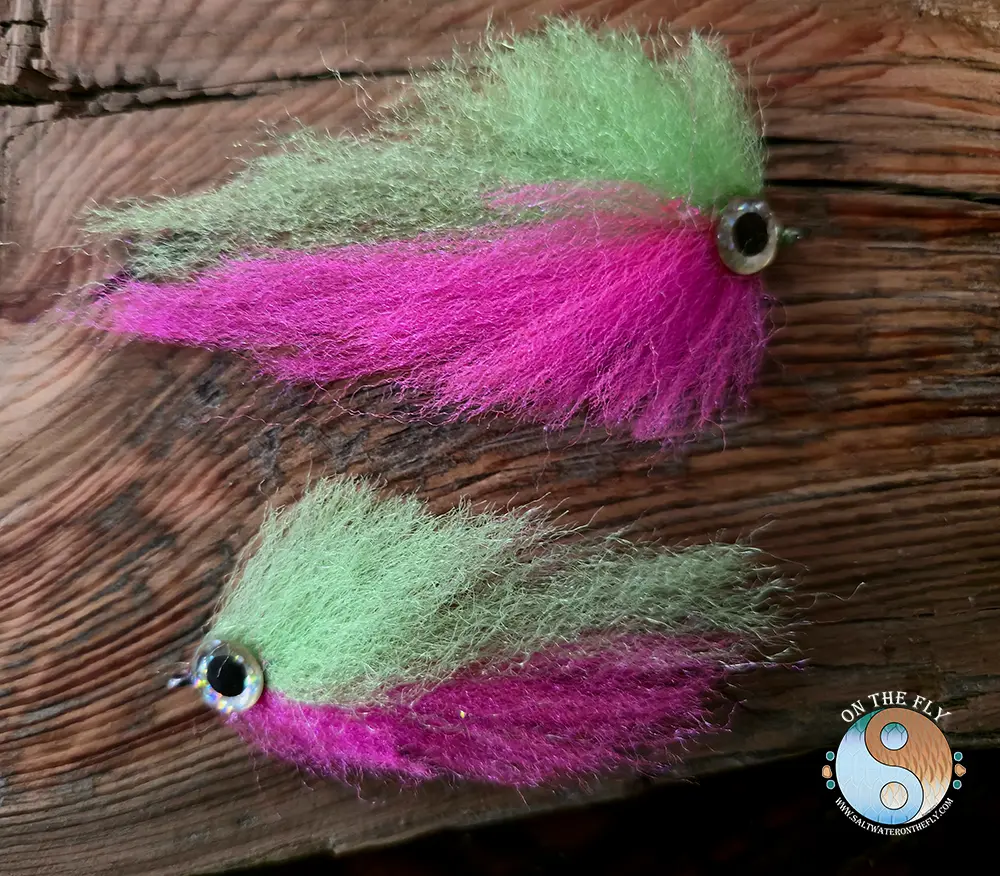
Chartreuse-Pink EP Baitfish 2/0 for Musky on the Fly
Tips for Locating and Catching Tiger Muskie
Catching tiger muskies consistently requires a strategic approach. These fish can be elusive at times, so you need to maximize your odds by focusing on high-percentage spots and tactics. Here’s what I’ve learned over the years:
Reading the water
Tiger muskies are ambush predators that relate heavily to structure. Key areas to target include weed beds, points, sunken islands, and drop-offs – basically anywhere baitfish are likely to congregate. In stained water, fish tighter to cover. On bright days, look for suspended fish over deeper water near structure. Electronics can be helpful for identifying prime real estate.
Casting techniques
Accurate casts are crucial when fishing tight to cover. You want to place your fly as close to structure as possible without hanging up. Use the wind to your advantage to boost your distance. I like to make a series of casts to cover a piece of structure before moving on. Fan cast the area, varying your angles and retrieve speeds. Remember, big flies catch big fish, so don’t be afraid to throw some meat.
Retrieving methods
Varying your retrieve is important until you dial in what the fish want. I usually start with an erratic strip-strip-pause cadence, but sometimes a faster ripping retrieve is needed to trigger bites. Mix up your strip lengths and speeds as you work an area. Follows are common when muskie fishing, so always be ready to figure-8 at boat-side to convert a curious fish into a catch.
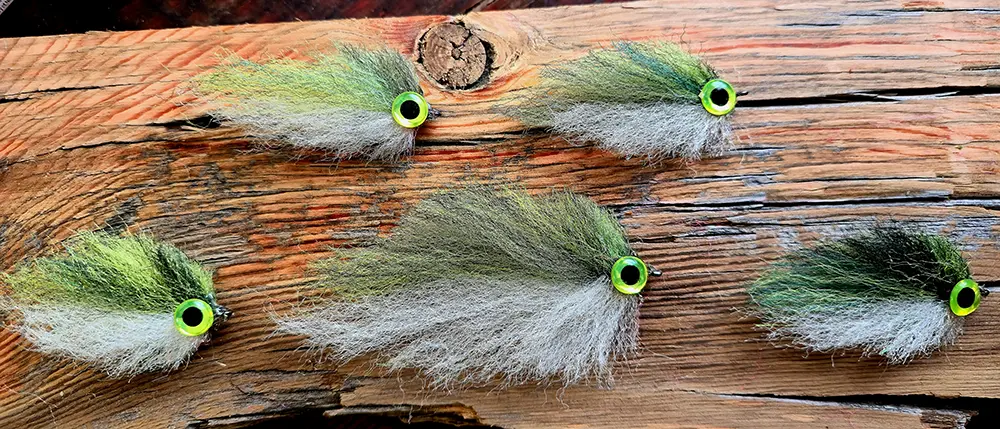
Bull Frog Pelagic Forger Brush Minnow
Fly Fishing at Deadman Basin: Tying and Using the Purple-Chartreuse, White, Blue and White, Bullfrog Pelagic Forger Minnow for Musky and Brown Trout
Fly fishing at Deadman Basin in Montana is a dream for anglers chasing the thrill of hooking Musky and Brown Trout. Nestled in a picturesque landscape with clear waters teeming with fish, Deadman Basin stands out as a top destination for fly fishing enthusiasts. One standout fly pattern for this location is the Purple-Chartreuse, White, Blue and White, Bullfrog Pelagic Forger Minnow. This fly’s vibrant colors and lifelike design make it irresistible to predatory fish, offering anglers a reliable tool for success. The EP Minnow is quickly becoming one of my favorite flies for Predators!
Why the Purple-Chartreuse, White, Blue and White, Bullfrog Pelagic Forger Minnow Works
The Pelagic Forger Minnow is a renowned fly pattern, celebrated for its ability to mimic baitfish that Musky and Brown Trout prey on. At Deadman Basin, the Purple-Chartreuse, White, Blue and White, Bullfrog variation shines due to its bold color combination. The rich purple and chartreuse hues create a striking contrast, grabbing the attention of fish even in murky conditions. Paired with 3D Halo Chartreuse Eyes, this fly gains a realistic edge that triggers aggressive strikes. Its design replicates the natural forage found in Montana waters, making it a must-have for targeting these species.
Tying Instructions for the Bullfrog Pelagic Forger Minnow
Ready to tie your own Purple-Chartreuse, White, Blue and White, Bullfrog Pelagic Forger Minnow? Here’s what you’ll need and how to do it.
Materials
-
Hook: Partridge Saltwater Hook (sizes 2 to 3/0 recommended for Musky and Brown Trout)
-
Fibres: Semperfli Predator Fibres in Rich Purple and Chartreuse
-
Eyes: 3D Halo Chartreuse Eyes
-
Thread: Strong tying thread. I have been using Semperfli 3/0 and 6/0 waxed thread with no problems, hold very well.
-
Additional Materials: Head cement, white and blue/white Predator fibres or the bullfrog predator fibres for this pattern
The Partridge Saltwater Hook is ideal thanks to its durability and corrosion resistance, perfect for battling the powerful fish at Deadman Basin.
Steps
-
Secure the Partridge Saltwater Hook in your vise and wrap the shank with thread from the eye to the bend.
-
Attach the 3D Halo Chartreuse Eyes near the hook eye using figure-eight wraps, leaving space for the head.
-
Take a small bundle of Semperfli Predator Fibres in Rich Purple and tie them in at the hook bend, extending 2-3 inches past as the tail.
-
Layer a bunch of Chartreuse Semperfli Predator Fibres over the purple, blending the colors for a two-tone effect.
-
Build the body by adding alternating layers of Rich Purple and Chartreuse fibres, tapering toward the eyes.
-
Tie in white and blue/white fibres on top near the head to form the bullfrog pattern, keeping it sparse yet distinct.
-
Finish with a neat thread head, whip finish, and apply head cement for durability.
Fishing Tips for Deadman Basin
To maximize your success with this Pelagic Forger Minnow at Deadman Basin, try these strategies:
-
Timing: Fish early mornings or late evenings, especially in summer, when Musky and Brown Trout are most active.
-
Retrieval: Use a steady strip with occasional pauses to imitate a wounded baitfish—a proven tactic for predatory fish.
-
Depth: Vary your fishing depth; Brown Trout may hug the bottom, while Musky often cruise mid-water.
-
Spots: Focus on drop-offs or weed edges at Deadman Basin, where fish ambush prey.
-
Regulations: Always check Montana’s fishing regulations and secure a valid permit.
Conclusion
The Purple-Chartreuse, White, Blue and White, Bullfrog Pelagic Forger Minnow is a game-changer for fly fishing Musky and Brown Trout at Deadman Basin in Montana. With Semperfli Predator Fibres in Rich Purple and Chartreuse, 3D Halo Eyes, and a sturdy Partridge Saltwater Hook, this fly is both easy to tie and highly effective. Follow the tying instructions, apply the fishing tips, and hit the water prepared for an unforgettable adventure at Deadman Basin!
Boating and Shore Fishing Access
To effectively fish Ackley Lake and Deadman’s Basin Reservoir, a boat is your best bet for covering water and reaching prime tiger muskie habitat. However, there are a few options for shore-bound anglers as well.
Boat launches
Both lakes have good concrete boat ramps for launching trailered boats. Ackley’s ramp is on the northwest shore, while Deadman’s Basin has a ramp on the southwest side. These facilities can handle most fishing boats up to about 18 feet. Just keep in mind they are day-use only, so no overnight mooring or camping is allowed at the ramps.
Shore fishing spots
If you don’t have a boat, there are some decent shore fishing opportunities, particularly at Ackley Lake. Look for areas you can wade out and cast from, like the dam face and several points on the north and west sides. Shore access is more limited at Deadman’s Basin, but you can try fishing near the boat ramp and dam. Just be prepared to hike a bit to find fishable spots, and be respectful of private property boundaries.
Amenities
Ackley Lake and Deadman’s Basin are pretty remote, so amenities are basic. You’ll find vault toilets and a few picnic tables near the boat ramps, but that’s about it. Bring your own drinking water and pack out all trash. The closest towns of Harlowton and Ryegate have a couple small stores stocked with everything you need for Muskie fly fishing outing. Major grocery runs require a longer drive to Lewistown or Billings.
- Chartreuse Yellow Buford Muskie Fly
- Muskie Tarpon Changer
- Black Red Buford Muskie Fly
- Chartreuse Gurgler / Explosive Top Water Action
- Black Buford Musky Fly
- Orange Black Buford Musky Fly
Buford’s and Changers along with other water moving baitfish patterns will enhance your day on the water, Muskie Pike Flies.
- Entrance to Ackley Lake State Park, Montana Muskie Fly Fishing
- Ackley Lake western shore boat ramp.
Other Fishing Opportunities at Ackley Lake and Deadman’s Basin
While tiger muskies are the main attraction, Ackley Lake and Deadman’s Basin Reservoir offer multi-species fishing opportunities throughout the year. Here are a few other options to round out your trip:
Trout fishing
Both lakes have solid populations of rainbow and brown trout that can be caught on flies. I like to strip woolly buggers and baitfish patterns or drift chironomids and balanced leeches under an indicator. Some of the rainbows can push 20 inches or better, especially in spring and fall when they cruise the shallows. Look for trout at creek inlets, along weed lines, and near the dam faces.
Kokanee salmon
From late summer into fall, Ackley and Deadman’s Basin get runs of kokanee salmon as they stage before spawning. These feisty landlocked sockeyes are a blast on light fly tackle. Small streamers, midge pupa, and attractor nymphs are all good bets for kokanee. Troll them behind a dodger or cast to schools you spot on your electronics. Limits are generous, so you can take a few home for the smoker.
Ice fishing
Once winter sets in and the lakes freeze over, usually by late December, you can catch trout and kokanee through the ice. Just be sure to check conditions before venturing out, as ice can be sketchy early and late in the season. I like to use small jigs and spoons tipped with wax worms or mealworms. Set up over deep water and work different depths until you find active fish. A portable shelter helps ward off the wind on those frigid Montana days.
Camping and Lodging Near the Lakes
If you’re planning an overnight trip to Ackley Lake or Deadman’s Basin Reservoir, camping is your best bet for staying close to the action. Here are the options in the area:
Campgrounds
Ackley Lake has a small 15-site campground on the west shore, with picnic tables and fire rings at each site. It’s a great base camp for early morning and evening fishing. Deadman’s Basin also has a basic campground near the boat ramp, with around 10 sites. Both campgrounds are first-come, first-served and can fill up on summer weekends, so have a backup plan.
RV parks
If you need RV hookups, you’ll have to stay at a private park in one of the nearby towns. The closest options are in Harlowton and Ryegate, both about a 30-45 minute drive from the lakes. These parks have water, dump stations, and restrooms. Call ahead for availability, as they can be busy with seasonal workers and travelers.
Cabins and lodges
There aren’t any lodges or cabin rentals right at Ackley or Deadman’s Basin, but you can find a few options in the surrounding area. Check in at a Central Montana VRBO or Airbnb for listings in Harlowton. For a wider selection, the city of Lewistown is about an hour north and has several hotels and motels. It makes a good base for day trips to the lakes, with plenty of dining and shopping too. Harlowton has 4 Locations I recommend for dinning:, Klo’s for great baked goods & daily specials, Gally’s Brewery, awesome beer, pizza’s, and collaborators in the Harlo Music Project. Loco Creek for breakfast, lunch & dinner. Barky’s Bar & Grill on main street has a decent burger and bar food.
Planning Your Trip to Ackley Lake and Deadman’s Basin
A little advance planning goes a long way toward a successful tiger muskie trip to central Montana. Here are a few key things to consider:
Best seasons to visit
While you can catch muskies from late spring through fall, I think June and September offer the best combination of weather and fishing conditions. Water temps are usually ideal, and fish are feeding actively. July and August can be good for early morning and late evening trips, but midday fishing gets tough. October is a sleeper month if you don’t mind bundling up and possibly dealing with snow.
Checking water conditions
Before you head out, take a few minutes to check the current water levels and surface temps at Ackley and Deadman’s Basin. The Montana DNRC website has updates for most reservoirs. In general, Ackley runs a bit warmer than Deadman’s Basin. Also keep an eye on the forecast, as muskie fishing can shut down during extreme cold fronts or right after a big storm blows through.
Hiring a guide
If you’re new to fly fishing for tiger muskies, or just want to shortcut the learning curve, consider booking a trip with a local guide. An experienced muskie guide can put you on fish and share tips for hooking and landing these beasts. Look for a guide who specializes in fly fishing the Deadman’s Basin and Ackley Lake area. Check their website and social media for photos, reviews, and info on their guiding style to find a good fit. Expect to pay $400-600 for a full day trip.
Fly fishing for tiger muskie at Ackley Lake and Deadman’s Basin in Montana offers an exciting adventure. The best time to fish is late spring through early fall, with June and September being peak months. Use 8-10 weight rods, heavy leaders, and big flies like streamers or poppers to attract these powerful predators.
Conclusion of Montana Muskie Fly Fishing
Fly fishing for muskie at Ackley Lake and Deadman Basin in Montana is an experience like no other. It’s not for the faint of heart, but if you’re up for the challenge, the rewards are unreal.
Remember, it’s all about the right gear, the right techniques, and being there at the right time. But most of all, it’s about embracing the adventure and the thrill of the chase.
So what are you waiting for? Grab your rod, tie on a big streamer, and get ready to tangle with some of the toughest, most exciting fish in the West. Trust me, once you’ve danced with a Montana muskie, you’ll never look at fly fishing the same way again.
